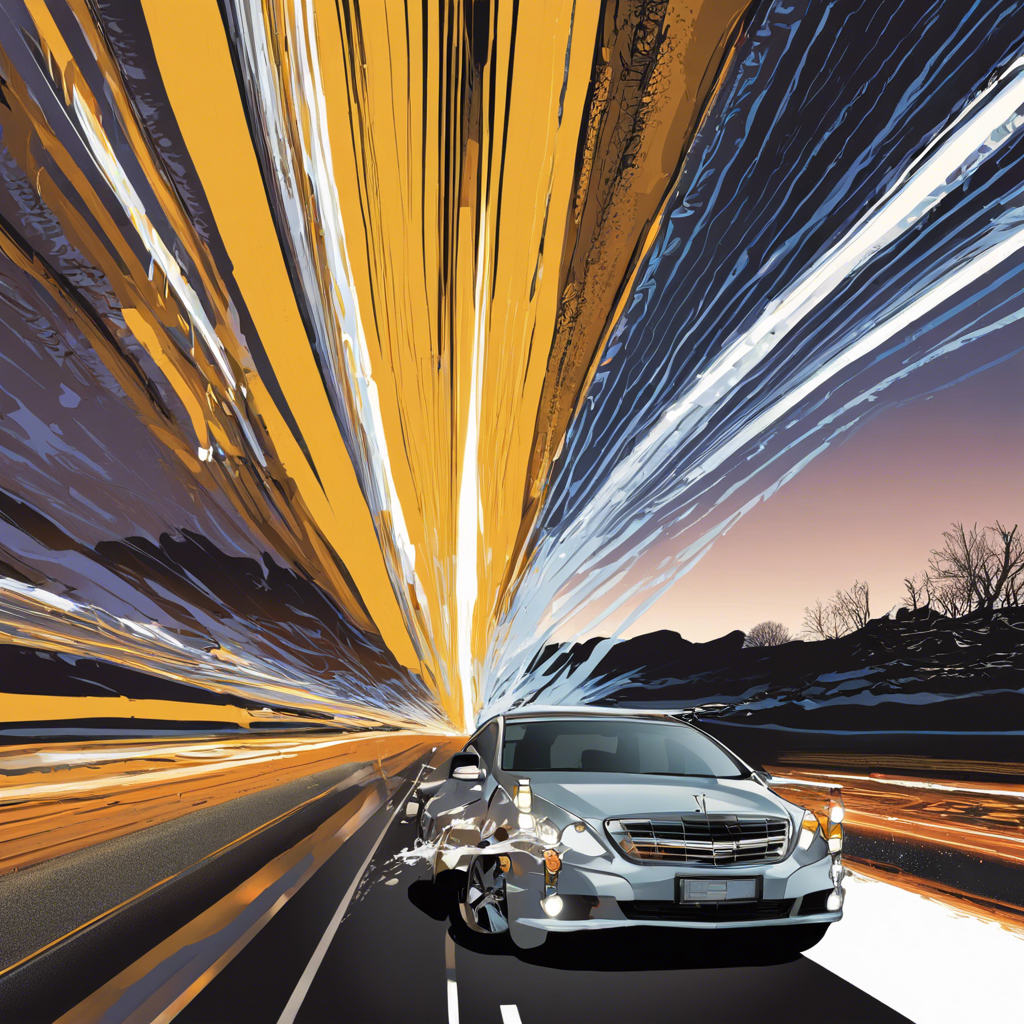Exploring the correlation between vehicle lighting systems and accident rates, this article examines the impact of lighting technology on road safety.
Vehicle lighting systems are a vital component of road safety, ensuring that drivers can see and be seen, especially during low visibility conditions. Advances in lighting technology have brought about significant improvements in road safety, but how much impact do these systems have on accident rates? This article delves into the world of automotive lighting, exploring its various components, the benefits they offer, and the potential challenges they aim to address.
The evolution of vehicle lighting systems has been remarkable, with traditional halogen bulbs making way for more advanced technologies such as LED and HID (High-Intensity Discharge) lights. These modern lighting systems not only provide brighter and more focused illumination but also offer enhanced durability and energy efficiency. The following sections will shed light on the importance of these systems and their role in reducing accidents and improving overall road safety.
The Bright Side: Benefits of Advanced Lighting Systems
Advanced lighting systems bring a plethora of advantages to drivers and road users alike. Firstly, they significantly enhance visibility, particularly in adverse weather conditions or at night, allowing drivers to detect potential hazards more effectively. This heightened visibility is crucial in preventing accidents and ensuring the safety of all road users.
Furthermore, these modern lighting systems are designed with energy efficiency in mind. The longevity of LED and HID lights means that they require less frequent replacements, reducing maintenance costs and minimizing the environmental impact associated with waste disposal. For a deeper dive into the environmental benefits of LED lighting, consider exploring [Environmental Impact of LED Lights](https://www.energy.gov/energysaver/save-electricity-and-fuel/lighting-choices-save-you-money).
Another critical aspect is the role of lighting systems in enhancing vehicle styling and design. Modern car manufacturers embrace the aesthetic appeal of LED and HID lights, integrating them into the overall design language of their vehicles. This not only adds to the visual appeal but also contributes to the vehicle’s overall safety by making it more visible from various angles.
The Dark Side: Challenges and Misconceptions
While advanced lighting systems offer numerous benefits, they also present some challenges and misconceptions that are important to address.
The Glare Effect
One common concern is the potential for glare, especially with high-intensity lighting systems like HIDs. Glare can temporarily blind other drivers, increasing the risk of accidents. However, this issue is being addressed through the development of adaptive lighting systems, which adjust beam patterns and intensity to minimize glare, ensuring other drivers are not adversely affected. For more information on adaptive lighting, you can refer to [Adaptive Lighting Systems: The Future of Automotive Lighting](https://www.autoblog.com/2021/01/17/adaptive-lighting-systems-explained/).
Cost and Maintenance
Another challenge is the cost associated with advanced lighting systems. LED and HID lights can be more expensive than traditional halogen bulbs, which may deter some drivers from upgrading. However, the long-term benefits, including reduced maintenance and increased energy efficiency, can offset these initial expenses. Moreover, the potential for reduced accident rates and improved safety make the investment worthwhile.
Frequently Asked Questions
Do brighter lights always mean safer driving?
Not necessarily. While brighter lights can enhance visibility, they must be used judiciously. Overly bright lights can cause glare, distracting or blinding other drivers, and potentially increasing the risk of accidents. The key is to strike a balance between brightness and glare prevention.
How do adaptive lighting systems work?
Adaptive lighting systems use sensors and cameras to detect other vehicles and adjust the beam pattern and intensity accordingly. This technology aims to provide optimal visibility without causing glare for oncoming drivers. Check out this resource [Adaptive Lighting Systems: Enhancing Safety and Visibility](https://www.caranddriver.com/features/adaptive-lighting-systems-explained) for more insights.
Are LED lights better than HID lights in terms of safety?
Both LED and HID lights have their advantages and potential drawbacks. LED lights offer excellent energy efficiency and longevity, but their brightness can vary depending on the design and quality. HID lights provide intense illumination but can be more susceptible to glare. The choice between the two often depends on personal preference and the specific needs of the driver and vehicle.
Conclusion
Vehicle lighting systems play a crucial role in road safety, with advanced technologies like LED and HID lights offering significant benefits. These systems enhance visibility, improve energy efficiency, and contribute to the overall safety and design of modern vehicles. While challenges such as glare and cost exist, they can be mitigated through technological advancements and a balanced approach to lighting design.
By addressing these challenges and dispelling misconceptions, we can ensure that vehicle lighting systems continue to serve their primary purpose: making our roads safer for all users. As technology advances, so too will our ability to create more effective and efficient lighting solutions, further reducing accident rates and ultimately saving lives.
